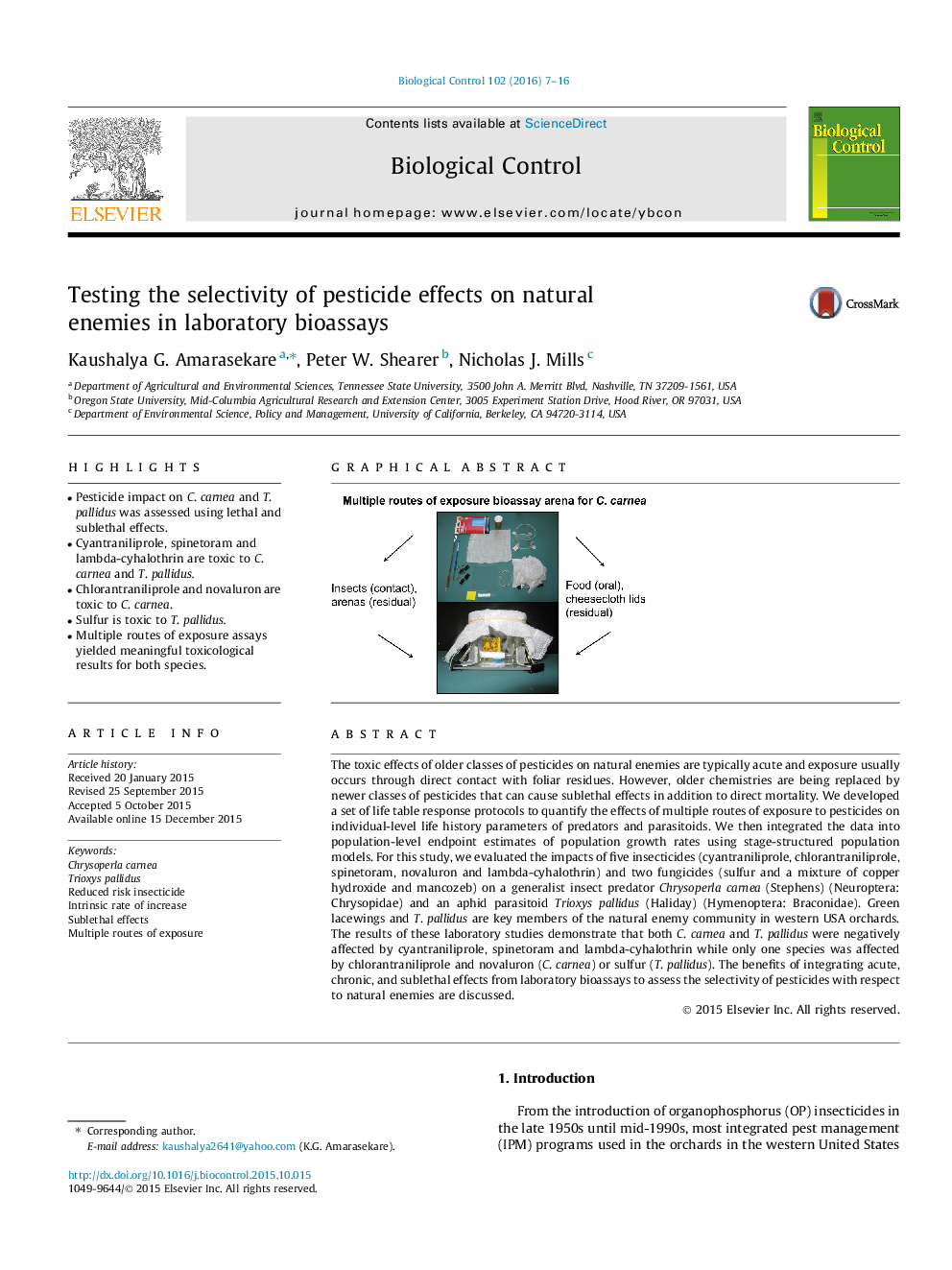| کد مقاله | کد نشریه | سال انتشار | مقاله انگلیسی | نسخه تمام متن |
|---|---|---|---|---|
| 4503562 | 1624232 | 2016 | 10 صفحه PDF | دانلود رایگان |
• Pesticide impact on C. carnea and T. pallidus was assessed using lethal and sublethal effects.
• Cyantraniliprole, spinetoram and lambda-cyhalothrin are toxic to C. carnea and T. pallidus.
• Chlorantraniliprole and novaluron are toxic to C. carnea.
• Sulfur is toxic to T. pallidus.
• Multiple routes of exposure assays yielded meaningful toxicological results for both species.
The toxic effects of older classes of pesticides on natural enemies are typically acute and exposure usually occurs through direct contact with foliar residues. However, older chemistries are being replaced by newer classes of pesticides that can cause sublethal effects in addition to direct mortality. We developed a set of life table response protocols to quantify the effects of multiple routes of exposure to pesticides on individual-level life history parameters of predators and parasitoids. We then integrated the data into population-level endpoint estimates of population growth rates using stage-structured population models. For this study, we evaluated the impacts of five insecticides (cyantraniliprole, chlorantraniliprole, spinetoram, novaluron and lambda-cyhalothrin) and two fungicides (sulfur and a mixture of copper hydroxide and mancozeb) on a generalist insect predator Chrysoperla carnea (Stephens) (Neuroptera: Chrysopidae) and an aphid parasitoid Trioxys pallidus (Haliday) (Hymenoptera: Braconidae). Green lacewings and T. pallidus are key members of the natural enemy community in western USA orchards. The results of these laboratory studies demonstrate that both C. carnea and T. pallidus were negatively affected by cyantraniliprole, spinetoram and lambda-cyhalothrin while only one species was affected by chlorantraniliprole and novaluron (C. carnea) or sulfur (T. pallidus). The benefits of integrating acute, chronic, and sublethal effects from laboratory bioassays to assess the selectivity of pesticides with respect to natural enemies are discussed.
Figure optionsDownload as PowerPoint slide
Journal: Biological Control - Volume 102, November 2016, Pages 7–16
